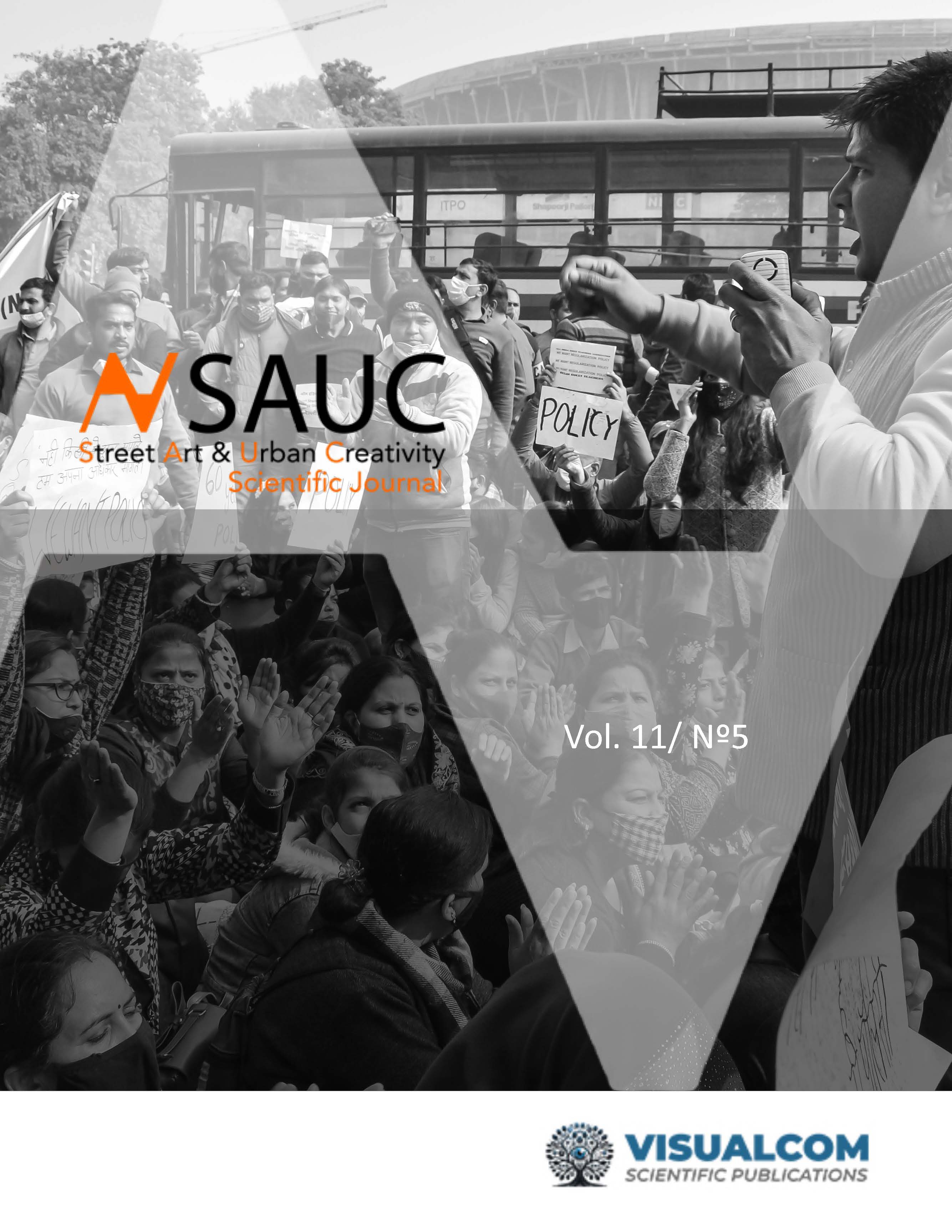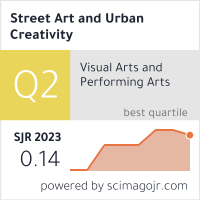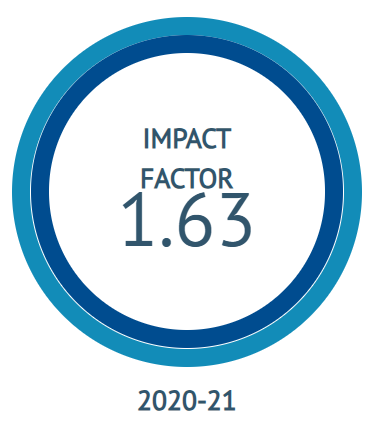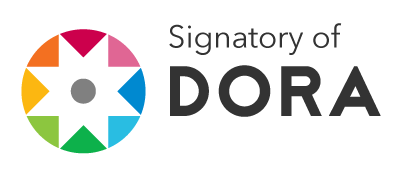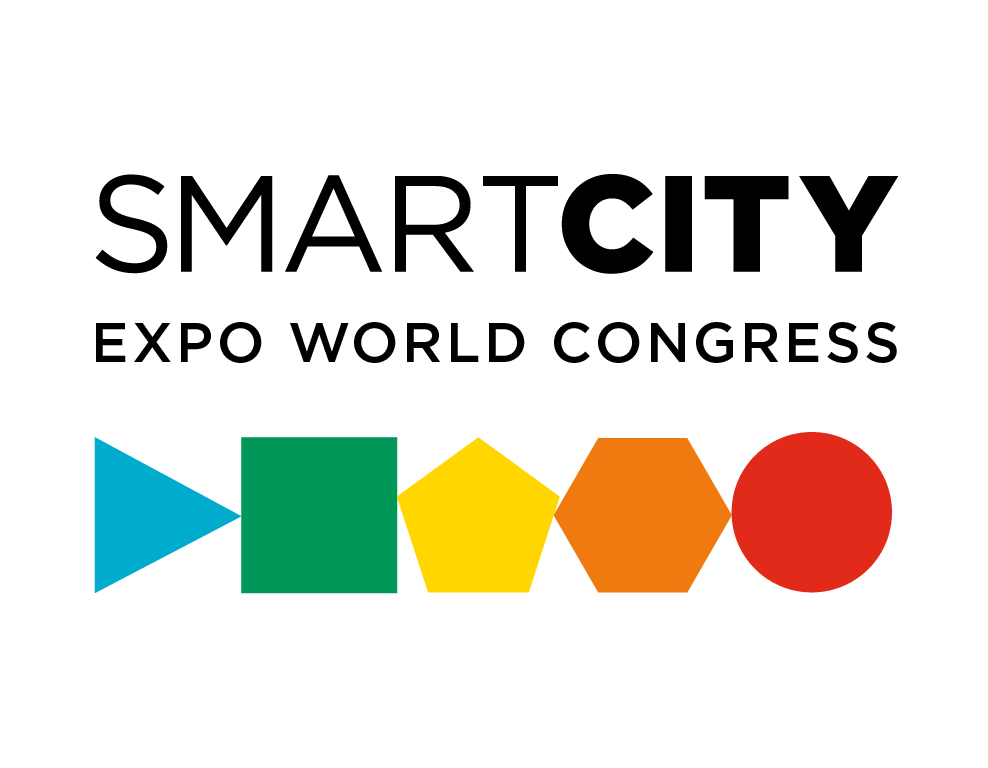City and arts as a space for the reconstruction of history
DOI:
https://doi.org/10.62161/sauc.v11.5839Keywords:
Memory, History, Arts, Heritage, Art-based researchAbstract
This article presents the results of a research project aimed at creating a space for citizen participation, enabling reflection and recognition of the past in a region long celebrated for its cultural and artistic heritage. It explores how social and historical phenomena were interpreted through artistic creation in collaboration with the community of San Martín (Meta, Colombia). The discussion begins with an examination of art’s role in facilitating social interaction, followed by an overview of the activities conducted using a mixed methodology that combines action research and creative research. This is followed by an analysis of the artistic expressions produced by local artists. The article concludes with a consideration of the outcomes of the project, focusing on memory, history, and heritage as experienced through the creation of a collective artistic space.
Downloads
Global Statistics ℹ️
|
212
Views
|
283
Downloads
|
|
495
Total
|
|
References
Acaso, M., & Megías, C. (2019). Art Thinking. Cómo el arte puede transformar la educación. Paidós Educación.
Amador-Baquiro, J. C. (2023). Memoria del pasado reciente y multimodalidad en escuelas rurales de Colombia: una experiencia de investigación-creación. Arte, Individuo y Sociedad, 35(1), 283-302. https://doi.org/10.5209/aris.82802
Asprilla, L. I. (2020). Mapeando el proyecto. Una propuesta desde las artes, la práctica pedagógica y la investigación. Publicación independiente.
Augé, M. (1994). Hacia una antropología de los mundos contemporáneos. Gedisa.
Ballesteros, M. y Beltrán, E. M. (2018). ¿Investigar creando? Una guía para la investigación-creación en la academia. Universidad El Bosque.
Carr, W., & Kemmis, S. (1988). Teoría crítica de la enseñanza. Roca.
Cepeda, J. (2018). Una aproximación al concepto de identidad cultural a partir de experiencias: el patrimonio y la educación. Tabanque, 31, 244-262. https://doi.org/10.24197/trp.31.2018.244-262
Debord, G. (2005). La sociedad del espectáculo. Pre-Textos.
De Certeau, M. (1990). La invención de lo cotidiano. Universidad Iberoamericana.
De Pascual, A., & Lanau, D. (2018). El arte es una forma de hacer (no una cosa que se hace). Catarata.
Gannon, S., & Naidoo, L. (2020). Thinking–feeling–imagining futures through creative arts-based participatory research. Australian Educational Researcher, 47(1), 113-128. https://doi.org/10.1007/s13384-019-00330-6
García-Huidobro, R. (2020). Cruzar la Mirada. Resignificar a las artes en la sociedad actual. RIL Editores.
García-Huidobro, R., & Freire-Smith, M. (2023). Hacia prácticas artísticas de mediación en contextos sociales. Arte, Individuo y Sociedad, 35(3), 993-1018. https://revistas.ucm.es/index.php/ARIS/article/view/85576
Ghiso, A. (2010). La fugaz verdad de la experiencia (Ecología del acontecimiento y la experiencia formativa). Polis, Revista latinoamericana, 9(25), 137-163. https://www.redalyc.org/articulo.oa?id=30512376008
Halbwachs, M. (2004). La memoria colectiva. Prensas Universitarias de Zaragoza.
Hannula, M., Suoranta, J., & Vadén, T. (2005). Artistic Research. Theories, Methods and Practices. Academy of Fine Arts.
Hernández, O. (2014). La creación y la investigación artística en instituciones colombianas de educación superior. A contratiempo, (23). http://www.musigrafia.org/acontratiempo/?ediciones/revista-23/artculos/la-creacin-y-la-investigacin-artstica-en-instituciones-colombianas-de-educacin-superior.html
Huerta, R. (2022). La Memoria. Investigación basada en las artes para la formación del profesorado. Arte Individuo y Sociedad, 34(1), 27-45. https://doi.org/10.5209/aris.70081
Ingman, B. C. (2022). Artistic sensibility is inherent to research. International Journal of Qualitative Methods, 21. https://doi.org/10.1177/16094069211069267
Jodelet, D. (2010). La memoria de los lugares urbanos. Alteridades, 20(39), 81-89. https://www.redalyc.org/articulo.oa?id=74720828007
Jokela, T. (2019). Art-Based action research for art education in the north. International Journal of Art & Design Education, 38(3), 599-609. https://doi.org/10.1111/jade.12243
Kaplan, A. W. (2020). Shifting paradigms in environmental research methods through the visual arts. Arts and Humanities in Higher Education, 19(2), 115-143. https://doi.org/10.1177/1474022218787158
Latorre, A. (2018). La investigación-acción. Conocer y cambiar la práctica educativa. Grao.
Lazarín, M., Ricoy, M. C., & Feliz, S. (2023). Estrategias utilizadas en la investigación educativa sustentada por técnicas artísticas, Arte, Individuo y Sociedad, 35(3), 859-883. https://doi.org/10.5209/aris.85065
López-Cano, R., & San Cristóbal, U. (2014). Investigación artística en música: problemas, métodos, experiencias y modelos. FONCA y ESMUC.
Mesa, A. (2018). Proyecto sin destino. Para una teoría del proyecto en las disciplinas proyectuales. Bolivariana.
Montoya, S. (2018). Introducción a los procesos de investigación, creación e innovación en las artes. Universidad de Antioquia.
Moreno, A. (2016). La mediación artística: Artes para la transformación social, la inclusión social y el desarrollo comunitario. Octaedro.
Morris, R. (2016). The fundamentals of product design. Bloomsbury Publishing.
Perdomo-Vanegas, W., & López-Pineda, L. (2021). El lenguaje artístico como dinamizador de la memoria histórica. Arte, Individuo y Sociedad, 33(4), 1273-1290. https://doi.org/10.5209/aris.71572
Ricoeur, P. (2010). La memoria, la historia, el olvido. Trotta.
Rodrigo-Montero, J. (2015). Kunstcoop: Experiencias de mediación artística en Alemania. Arte, Individuo y Sociedad, 27(3), 375-393. https://doi.org/10.5209/rev_ARIS.2015.v27.n3.43723
Salduondo, J., & Etchecoin, L. (2019). El mapa corporal como territorio de vida. En M. Cohendoz (Ed.), Estudios comunicacionales de la corporalidad (pp. 31-39). Universidad Nacional del Centro de la Provincia de Buenos Aires.
Sola-Pizarro, M.B. (2019). Prácticas Artísticas Colaborativas: nuevos formatos entre el arte y la educación. De Arte, 18, 261-268. https://doi.org/10.18002/da.v0i18.5885
Tunali, T. (2023). Aesthetic Activism and the Carnivalesque in the Urban Social Movements. Street Art and Urban Creactivity, 9(3), 24-38. https://doi.org/10.25765/sauc.v9i3.802
Trachana, A., & Georgiana Şerbănoiu, I. (2020). Violencia, memoria y arquitectura. Las formas de objetivación de la memoria de los acontecimientos violentos del último siglo en el espacio. Arte, Individuo y Sociedad, 32(3), 603-624. https://doi.org/10.5209/aris.63557
Ušić, E. (2024). On the Margins of Memory: World War II Graffiti in the Northern Adriatic Borderland. Street Art and Urban Creactivity, 10(1), 10-25. https://doi.org/10.25765/sauc.v10i1.916
Von-Meiss, P. (2012). De la forme au lieu + tectonique. Press Polytecniques et Universtaires Romandes.
Zakaria, Z., Setyosari, P., Sulton, S., & Kuswandi, D. (2019). The effect of art-based learning to improve teaching effectiveness in pre-service teachers. Journal for the Education of Gifted Young Scientists, 7(3), 579-592. https://doi.org/10.17478/jegys.606963
Downloads
Published
How to Cite
Issue
Section
License
Copyright (c) 2025 Authors retain copyright and transfer to the journal the right of first publication and publishing rights

This work is licensed under a Creative Commons Attribution-NoDerivatives 4.0 International License.
Those authors who publish in this journal accept the following terms:
-
Authors retain copyright.
-
Authors transfer to the journal the right of first publication. The journal also owns the publishing rights.
-
All published contents are governed by an Attribution-NoDerivatives 4.0 International License.
Access the informative version and legal text of the license. By virtue of this, third parties are allowed to use what is published as long as they mention the authorship of the work and the first publication in this journal. If you transform the material, you may not distribute the modified work. -
Authors may make other independent and additional contractual arrangements for non-exclusive distribution of the version of the article published in this journal (e.g., inclusion in an institutional repository or publication in a book) as long as they clearly indicate that the work was first published in this journal.
- Authors are allowed and recommended to publish their work on the Internet (for example on institutional and personal websites), following the publication of, and referencing the journal, as this could lead to constructive exchanges and a more extensive and quick circulation of published works (see The Effect of Open Access).

